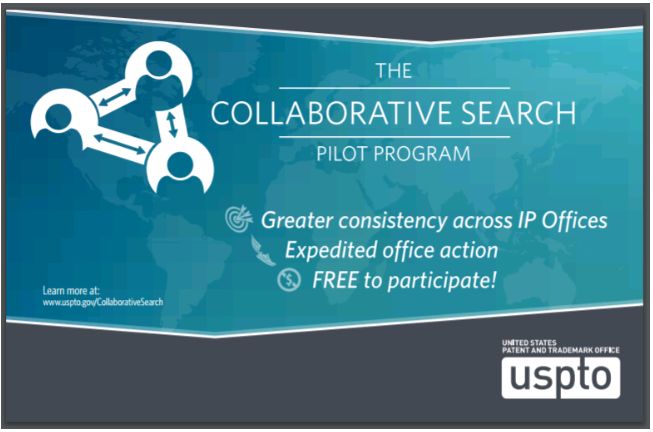As announced in this October 30, 2017 Federal Register notice, the USPTO is expanding the Collaborative Search Pilot Program under which applicants can request that multiple intellectual property offices exchange search results prior to issuing a first office action. As explained in the notice, the CSP is designed to provide examiners with a "more comprehensive set of prior art references to consider when making initial patentability determinations." The Expanded CSP drops the requirement to participate in the First Action Interview Pilot Program and may be opened up to additional intellectual property offices.
The Expanded Collaborative Search Pilot Program
The Expanded CSP commenced November 1, 2017, and will run through at least November 1, 2020. The USPTO, JPO and KIPO participated in the original CSP, and currently are the only "partner" intellectual property offices participating in the Expanded CSP, although the Federal Register Notice contemplates that additional partner offices may join. According to the Federal Register Notice, each partner office will accept up to 400 applications into the program per year.

Once a petition to participate in the Expanded CSP has been granted, the application will be placed on an examiner's "special" examination docket, and the USPTO and other selected partner offices will have four months to provide their search results. Then, the examiner will consider all exchanged search results (and any other references submitted by the applicant) when preparing the first Office Action on the merits (referred to as the "FAOM" in the Federal Register Notice). Once the FAOM has been issued, the application will no longer enjoy "special" status under the Expanded CSP.
Requirements For The Expanded CSP
To participate in the Expanded CSP, an application must meet the following requirements:
- Be a complete non-reissue, non-provisional utility application filed under 35 U.S.C. § 111(a) or a PCT application that has entered the national stage in compliance with 35 U.S.C. § 371.
- Have an effective filing date of no earlier than March 16, 2013.
- Have a common earliest priority date with the corresponding counterpart application(s) filed in the selected partner office(s) that is no earlier than March 16, 2013.
- Have three or fewer independent claims and 20 or fewer total claims, and no multiple dependent claims (counterpart applications may contain multiple dependent claims if permitted under local practice) at the time of filing or after entry of a preliminary amendment.
- Include only claims directed to a single invention, or the examiner may treat the first claimed invention as constructively elected without traverse if the applicant cannot be reached for a telephone restriction/election.

The following procedural requirements also must be satisfied:
- Petition form PTO/SB/437 must be filed in the application via EFS-Web, with separate petitions filed for each selected partner office.
- The petition must be filed "before examination has commenced" in the USPTO and selected partner offices which may be before issuance of an FAOM.
- Any parallel requests filed in partner offices must be filed within 15 days of each other.
- A claims correspondence table must be filed, establishing "substantial corresponding scope" between all independent claims present in the U.S. application and the corresponding counterpart application(s) filed in the selected partner office(s).
- An English translation of the claims for each counterpart application filed in the selected partner office(s) not publicly available in English.
- No fee is required
Applicants seeking to participate in the Expanded CSP should consult the Federal Register Notice for additional details.
No Relief From IDS Requirements
Even if an applicant participates in the Expanded CSP, the USPTO still requires the Applicant to ensure that all references cited by the selected partner offices are made of record in the U.S. application.
If the references cited by any partner IP office are not already of record in the USPTO application and the applicant wants to ensure that the examiner considers the references, then the applicant should file an Information Disclosure Statement (IDS) that includes a copy of the communication along with copies of any missing or newly cited references in accordance with 37 CFR § 1.97, 37 CFR § 1.98, and [MPEP] § 609.04(a)-(b).
Since an applicant won't know that a reference cited by a partner office is "not already of record" via the CSP until that information is provided with the FAOM, the applicant may have to pay to a fee to obtain consideration of any such IDS.
The content of this article is intended to provide a general guide to the subject matter. Specialist advice should be sought about your specific circumstances.


